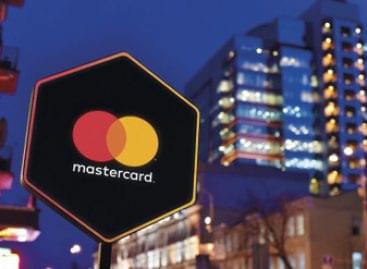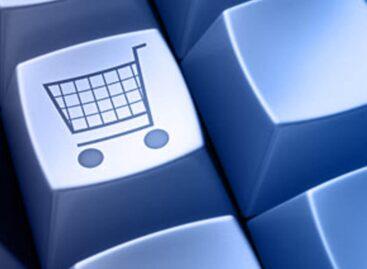Home is where the heart is
Although European households are still struggling, the financial squeeze seems to be easing. If things continue on the current trajectory, shoppers will plan with much more confidence and increasingly buy what they like rather than what they need, it was revealed at a GfK-YouGov webinar.

This article is available for reading in Trade magazin 2024/10
Difficult to stay within budget
2023 brought strong growth in the FMCG market, driven primarily by continued high inflation, told Lenneke Schils, global insights manager of GfK-YouGov in her online presentation. Global growth was 8.6% and the growth was 8.4% in Western and Southern Europe, and 12% in Central and Eastern Europe. However, 34% of households continue to struggle to stay within their budget, even though this proportion has steadily decreased recently. In Spain and Hungary many people are still experiencing difficulties on a daily basis: half of households are struggling to make ends meet.
Finances continue to be a headache in Europe, but while in spring 2023 51% worried about their budgets, by spring 2024 this proportion fell to roughly the same level as at the start of the cost of living crisis back in 2022. Fears about climate change and pollution are growing. Almost 60% of households have to manage their budget on a daily basis. This is particularly true in Spain and Italy, and in Central and Eastern Europe for Serbia and Romania. In Western Europe the focus is on health and nutrition, while in Eastern Europe stress management is in the limelight.
Shoppers choose private labels
While Europe’s contribution to the growth of the global FMCG market was 33% (thanks in part to high inflation), the share of brands was just 17%, compared to the 70% share of private labels – which accounted for a record 42% of European FMCG sales last year. Still, the sales revenues of the majority of brands have increased, but if we ignore the impact of inflation and look only at the ultimate measure of brand acceptance – namely how many households buy and how often (consumer reach points – CRP) – only 44% of brands have managed to improve. The good news for the rest of the year is that if things continue on the current trajectory, shoppers will plan with greater confidence, meaning they will increasingly buy what they like, rather than just what they need – this suggests a significant shift towards quality.
Many brands have performed above the market average, but more importantly 85% of the brands that increased their consumer reach achieved this by stronger penetration and only 15% by greater frequency of purchase. Attracting new customers is still necessary – and not just for brands. The latest BG 20 project reveals that brands lose up to two thirds of their customers in a year. This proportion can be as high as 70% for a small brand in a category that is rarely purchased and as low as 36% for a large brand in a category that is bought often enough.
The retail channel situation is also changing
Discounters have grown in importance by 14% at a global level, but they are also the fastest growing retail channel in Europe. In 2023 the role of discounters strengthened in satisfying shopper demand in both Western and Eastern Europe, approaching 25% in Western Europe and rising to over 36% in Central and Eastern Europe. In terms of value sales, e-commerce is second behind the discount supermarket channel, which expanded by 13% in 2024.The channel’s share is much lower than that of discounters: 6% in Western Europe and around 2% in Eastern Europe. Taking into account past developments and the current trends in spending, e-commerce growth is expected to outstrip that of brick-and-mortar stores by a ratio of around 3:1, growing at an average annual rate of nearly 7% until 2030.
Promotions continue attract shoppers, although the overheated promotional focus is beginning to die down a little. In-store promotions continue to be of special importance in this area, as they are still the number one way for shoppers to find out about promotions (40%); retailer apps and physical leaflets are in the second place (34%-34%). As the situation of households is slowly getting better, much now depends on how retailers and brands help consumers to feel comfortable at home – a shelter from the challenges of the world – and to start redesigning their lifestyles, in the spirit of health and sustainability. //
Related news
Europeans throw away 812.6 million pieces of children’s clothing every year
🎧 Hallgasd a cikket: Lejátszás Szünet Folytatás Leállítás Nyelv: Auto…
Read more >K&H sustainability index: good intentions remain, but measurability is disappearing
🎧 Hallgasd a cikket: Lejátszás Szünet Folytatás Leállítás Nyelv: Auto…
Read more >Sustainable, people-centred and experience-based
🎧 Hallgasd a cikket: Lejátszás Szünet Folytatás Leállítás Nyelv: Auto…
Read more >Related news
The 6 most important payment trends in 2026:
🎧 Hallgasd a cikket: Lejátszás Szünet Folytatás Leállítás Nyelv: Auto…
Read more >Tourism continues to expand dynamically
🎧 Hallgasd a cikket: Lejátszás Szünet Folytatás Leállítás Nyelv: Auto…
Read more >FEOSZ creates a certificate for consumer-friendly web stores
🎧 Hallgasd a cikket: Lejátszás Szünet Folytatás Leállítás Nyelv: Auto…
Read more >







